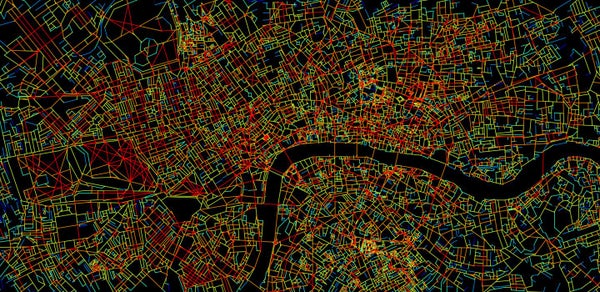The brain contains a built-in GPS that relies on memories of past navigation experiences to simulate future ones. But how does it represent new environments in order to determine how to navigate them successfully? And what happens in the brain when we enter a new space, or use satellite navigation (SatNav) technology to help us find our way around?
Research published Tuesday in Nature Communications reveals two distinct brain regions that cooperate to simulate the topology of one’s environment and plan future paths through it when one is actively navigating. In addition, the research suggests both regions become inactive when people follow SatNav instructions instead of using their spatial memories.
In a previous study researchers at University College London took participants on a guided tour through the streets of London’s Soho district and then used functional magnetic resonance imaging (fMRI) to scan their brains as they watched 10 different simulations of navigating those streets. Some of the movies required them to decide at intersections which way would be the shortest path to a predetermined destination; others came with instructions about which way to go at each junction.
On supporting science journalism
If you're enjoying this article, consider supporting our award-winning journalism by subscribing. By purchasing a subscription you are helping to ensure the future of impactful stories about the discoveries and ideas shaping our world today.
The researchers found that a brain structure called the hippocampus, which is involved in both memory and spatial navigation, appears to encode two different maps of the environment: One tracks the distance to the final destination as the crow flies and is encoded by the frontal region of the hippocampus, the other tracks the “true path” to the goal and is encoded by its rear region.
During the navigation tasks, the hippocampus acts like a flexible guidance system, flipping between these two maps according to changing demands. Activity in the hippocampal rear region acts like a homing signal, increasing as the goal gets closer.
For this new study, the researchers analyzed the layout of the streets in the movie simulations and calculated various measures for each one, such as how many other streets it is connected to and how close it is to the center of street network. They also reexamined the fMRI data from their earlier study, to look at the brain activity that occurred whenever the participants turned onto a new street.
Analysis of the brain-scanning data revealed activity in the rear right of the hippocampus increased whenever the participants entered a new street while navigating. It also varied with the number of new path options available. The more alternatives there were, the greater the brain activity.
The researchers also found that activity in the front of the hippocampus was associated with a property called centrality, defined by the proximity of each new street to the center of the network. Further, they observed activity in the participants’ prefrontal cortices when they were forced to make a detour and had to replan their route—and this, too, increased in relation to the number of options available. Intriguingly, when participants followed SatNav instructions, however, brain activity in these regions “switched off.”
Together, the new findings suggest the rear portion of the hippocampus reactivates spatial memories of possible navigation paths, with more available paths evoking more activity, and that the prefrontal cortex may contribute to path-planning by searching though different route options and selecting the best one.
Aidan Horner, a cognitive neuroscientist who studies memory and navigation at the University of York in England but was not involved in the work, praised the study. “This is a really interesting, novel approach to understanding how the hippocampus and prefrontal cortex contribute to spatial navigation and planning,” he wrote in an e-mail. The finding “aligns with the idea that the hippocampus not only represents our spatial environment but is also actively involved in simulating possible future paths.” What the study doesn’t show, he noted, is how the hippocampus performs such a simulation.
“There have been hundreds of papers about simulating the future, but nobody's looked at it in the context of spatial navigation,” says Hugo Spiers, senior author of the study. The neuroscientist was involved in a series of well-known studies that showed the hippocampus’s rear region is enlarged in London taxi drivers, and the extent of the increase is directly related to the driver’s experience. “The upshot of this [new] study is that the activity we saw at the back of the right hippocampus fits with theories that it’s simulating possibilities of paths to travel,” he says. The findings could aid in designing “spaces that are easier to navigate and increase well-being” and, because declining spatial navigation ability is among the earliest symptoms of Alzheimer’s disease, could facilitate the design of “new buildings that are dementia-friendly,” he adds.
Spiers is cautious about the observation that these brain regions were inactive when participants used SatNav instructions, however. “We found that you only engage the hippocampus and frontal areas when you’re using your memory of the environment to navigate, but this is just a one-off study, so we don’t know the long-term consequences of using SatNav.”
“If you think about the brain as a muscle, then certain activities, like learning maps of London’s streets, are like bodybuilding,” he says, “and all we can really say from our new findings is that you’re not working out these particular bits of the brain when you’re relying on SatNav.”
